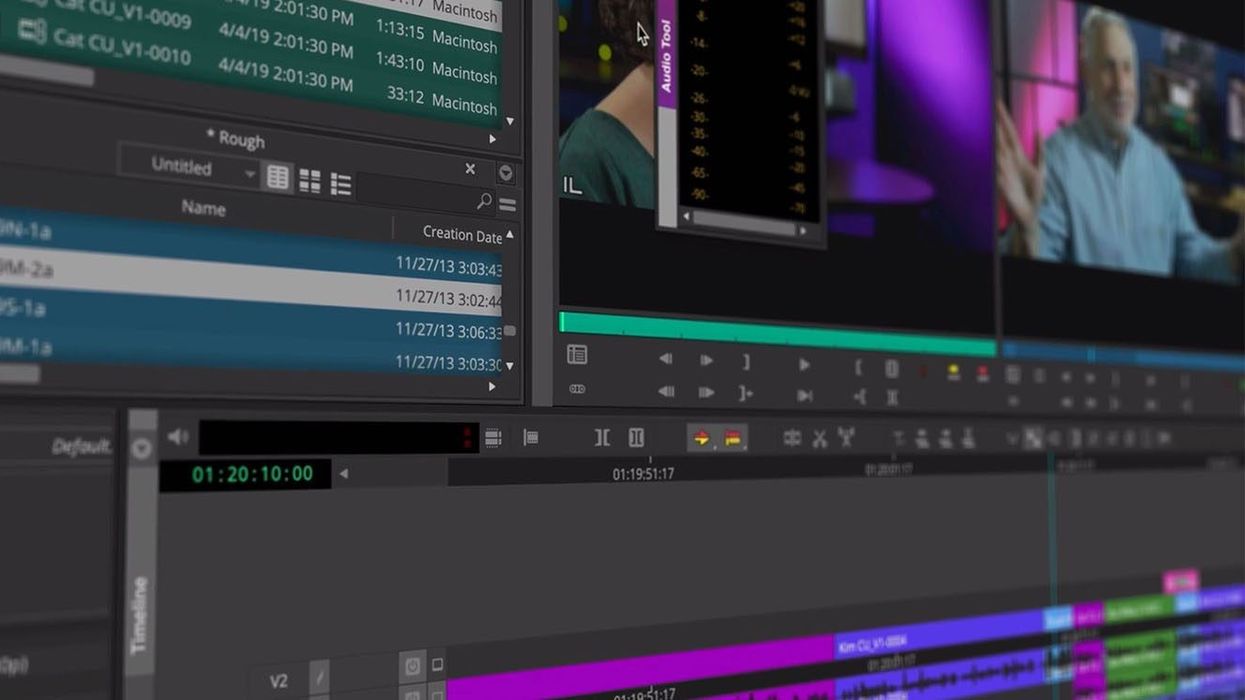How Upgrading to Media Composer v2020 Sped Up My Workflow
Media Composer listens to its true power users: the assistant editors.

Avid Media Composer is the oldest and most established non-linear editing system (NLE).
As the bearer of all that legacy, the team at Avid is often put in the tricky position in which users ask them to "change with the times but not change anything." After using the program for more than a decade, I actually think it manages to straddle that request, within reason.
Media Composer is not perfect for every job. While some editors stick with what they are most familiar with, I try to pick NLEs on a per-project basis. When do I use Avid? When I know I'm going to spend a lot of time on the project. There is no more comfortable place to spend weeks prepping and months editing than in Media Composer.
In 2019, it introduced the great UI revamp, introducing workspaces and greater interface flexibility. Veteran editors were understandably wary, and many post facilities stayed with trusty 2018 in that year. I got used to it fairly well, though sometimes the suddenness of how things shift still unnerves me.
It’s a testament to how in-tune the development team at Avid is that it introduced a small negligible feature that addressed exactly that feeling—the blank panel. An empty panel that shows up when you close a window for the sole purpose of not shifting everything while you’re working. A simple feature add like that demonstrates an effective and thoughtful feedback loop.

So, who is Avid listening to among its users? It can be a very diverse pool of users in terms of sub-industries and workflows. But there are a certain group of crew members who are the true power users of the program—assistant editors.
According to Avid, many of its users utilize only 40 to 50% of the features in the program. These users, "veteran editors," have worked with Avid through years of updates and changes, but their fundamental work habits remain the same. It’s the people around them, the supporting crew, who have to interface with the finer functionalities of the software to speed up their processes.
As an assistant editor, I meet the project at certain stages. First, the initial ingest, organization, and prep. At this stage, I have to do certain repetitive tasks in bin organization. Up until now, I had at my disposal the ability to copy column data with Cmd/Ctrl + D, and not much else. Now I have Bulk Edit, which is an incredible timesaver, and in 2020.9 they added the ability to save my bulk rename process as a preset.
Reducing clicks and automating repetitive tasks is in my opinion where Avid has the most room to explore in future upgrades. I know assistant editors who go so far as to code automation with external programs to achieve tasks like cutting in original audio tracks back to an edited sequence.

Another exciting feature is the color-coded timeline selection. Not only does color-coding jazz up your timeline, but it’s also great for creating a visual distinction for different types of shots, for example, VFX clips that need to be turned over. Instead of going in and individually selecting my relevant clips, I can doubly gain from my color coding prep work by selecting certain color clips and creating a sequence from them in two clicks—have I mentioned time-saving features?

Even extended format support falls into the timesaving category because it creates fewer stops in my ingest and export. I used to say that if you want a plug-and-play project, go to Premiere or Resolve. Avid has a reputation for being very particular about what it will accept, and with good reason. That is the principle behind the stability. Broad format support chips away at that reputation now.
In 2020, Avid is definitely leaning into finishing with the new Universal Media Engine, which is just the exporter it wrote in order to not be reliant on QuickTime. The UME shortens some export times and adds way more options—MP4 wrapper, IMF, EXR, and the blessed ProRes export support for Windows.
It has also inevitably added custom resolution exports for social media formats, though the process for that would not be ideal.

I can see Avid's ambition for Media Composer to compete with other "one-stop-shop" style NLEs. It has added a host of color management capabilities, different working color spaces and output transforms, HDR, etc. I don’t see that ambition becoming a reality for now, maybe because it is truly difficult to comprehend the bird’s eye view of the pipeline and user base.
I do think the more features it adds that correspond to the way users operate, the more indispensable it becomes. Media Composer 2020 hasn’t changed the circumstances in which I would choose to work in the program, but it certainly changed the way I can operate and what I can achieve.
Have thoughts about Media Composer 2020? Sound off in the comments below.













